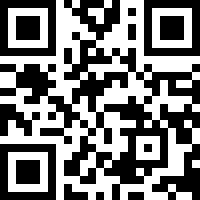On November 27, 2013, President Barrack Obama signed the Drug Quality and Security Act into law. This act serves as an amendment to the Federal Food, Drug, and Cosmetic Act, and grants the Food and Drug Administration additional means of regulating and monitoring the manufacturing process of drugs. It has become the cornerstone of combating counterfeit drugs in the United States and today we’ll be looking at it in more detail.
In late 2012, there was an outbreak of meningitis which killed almost 100 people and more than 800 became sick. This came about when a compounding pharmacy company who had a license to make specific medications for patients was found to be manufacturing drugs for a broader market. Not only was this a violation of their state license, it harmed about 1000 people in New England. The FDA had known about the practices for years, but could not do anything as it was in the jurisdiction of Massachusetts law enforcement. The Drug Quality and Security Act was drafted as a result, granting federal officials power to enforce drug laws when proliferation would supersede state boundaries.
Title I of the act takes on the issue of drug compounding. It amends the Federal Food, Drug, and Cosmetic Act to include compound drugs. It makes it easier and smoother for pharmacies to create medicines for individual patient use, but they must have the supervision of a licensed pharmacist, as well as meet other requirements. It also ensures old and new drugs are subject to rigorous study in respect to compounding before they can be used in such a way. It adds a variety of restrictions and regulations to an industry which had until then flown under the radar, especially in regards to labeling, new drug requirements, and track and trace requirements.
Title II is the Drug Supply Chain Security Act, or DSCSA. This deals with the supply chain and establishes requirements to ensure drugs and components are traceable at various steps along the way. It establishes the need of standards for consistent transaction information, so anyone who needs to know the information can reasonably follow the paper trail. It establishes requirements for manufacturers, wholesalers, distributors, and vendors to follow to ensure no one is being harmed by the drugs produced. It also ensures trading partners are authorized, covers protocol on returned pharmaceutical products, and creates rules about the medicine trade within the United States which transcend state jurisdictions.
Other features of the DSCSA include: waivers of requirements for people suffering from economic hardship, or when drugs are needed in an emergency; exceptions to requirements in very specific circumstances, such as when information that would go on a package is readily available elsewhere and would not be feasible to put on the package; and leeway for when exceptions might be needed in the future, to be determined by the Secretary of the FDA.
Finally, the DSCSA puts the responsibility of ensuring the veracity of products onto everyone in the drug supply chain. Manufacturers, wholesale distributors, dispensers, and repackagers need to implement systems for investigating products when the need arises and handling counterfeit products. There should be policies for quarantine, disposal, and giving notice to the FDA and trading partners whenever a problem arises with drug products.
As a law in the United States, this provides specific guidelines as to how drugs need to be monitored and tracked through the supply chain. It allows the federal government to set procedures and regulations for how drugs are bought and sold, and ultimately protect people from the harmful actions of people looking to sell dangerous or fake medications.
Here at IDLogiq, we’re working on solutions to ensure supply chain security that meet and exceed DSCSA requirements. We believe in ensuring the security and transparency of the supply chain, and provide a variety of different products for the needs of each individual business.


